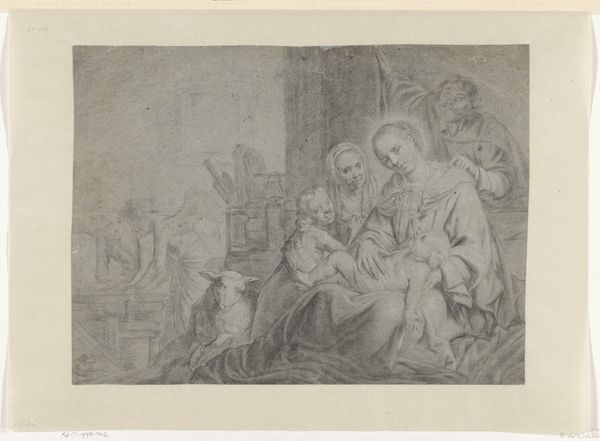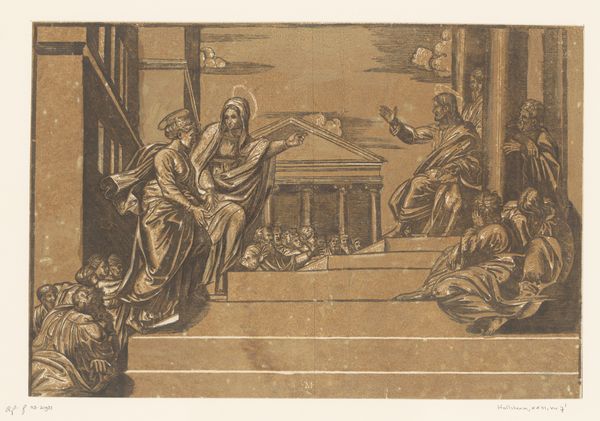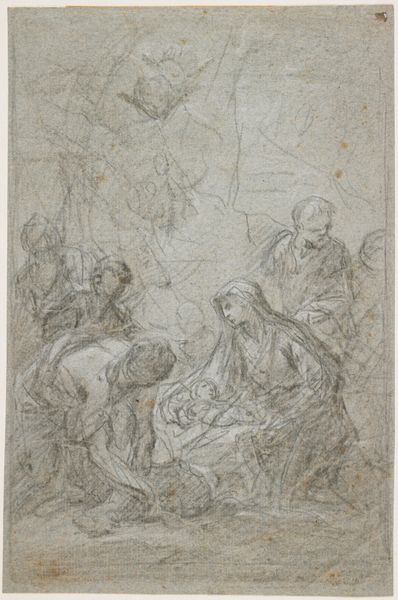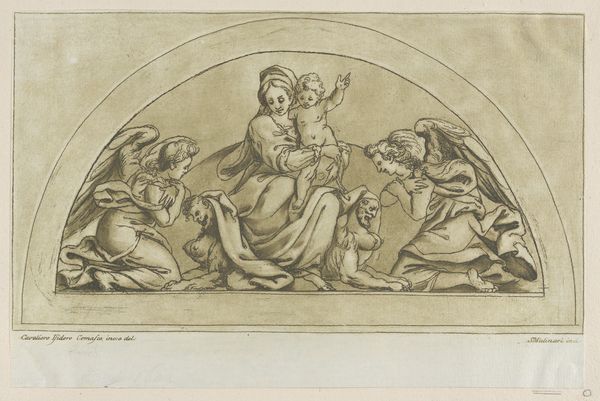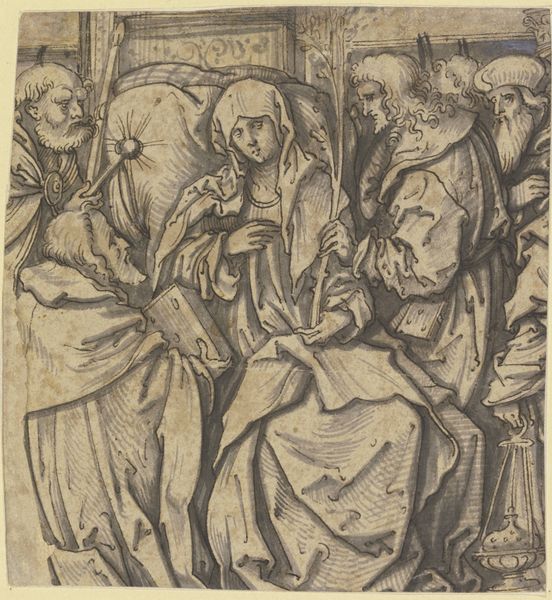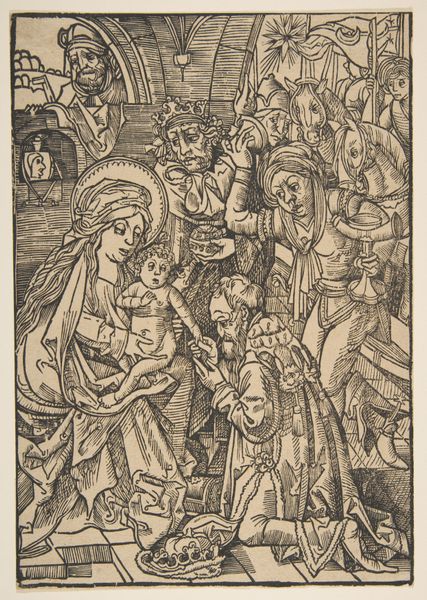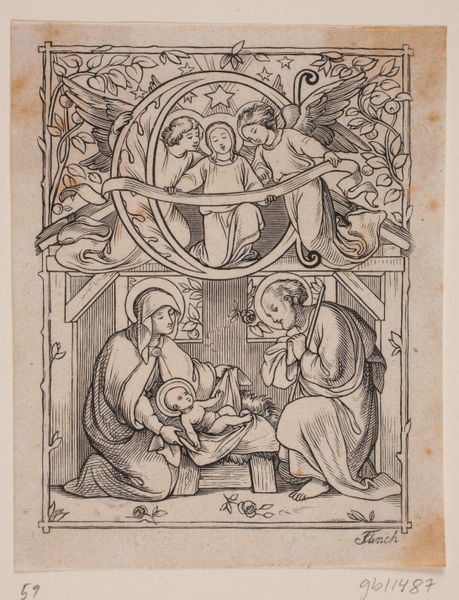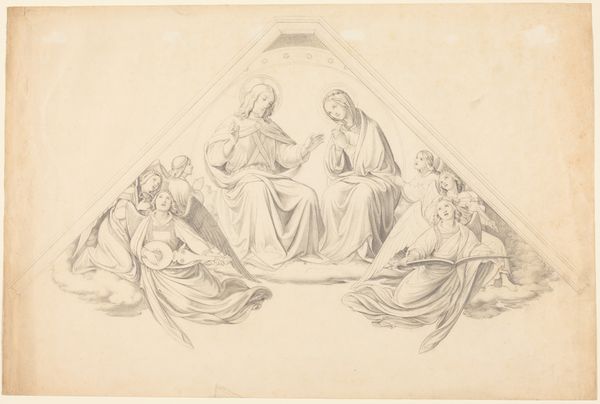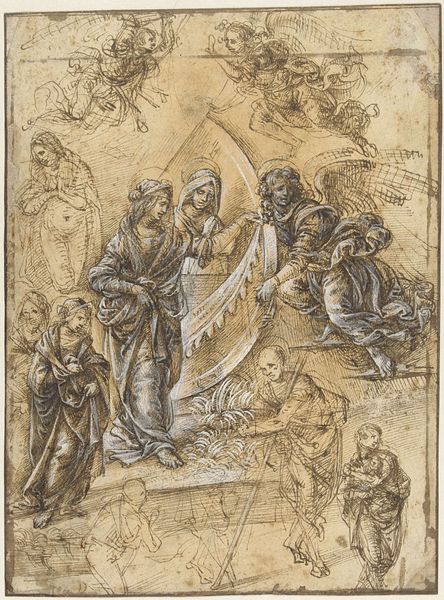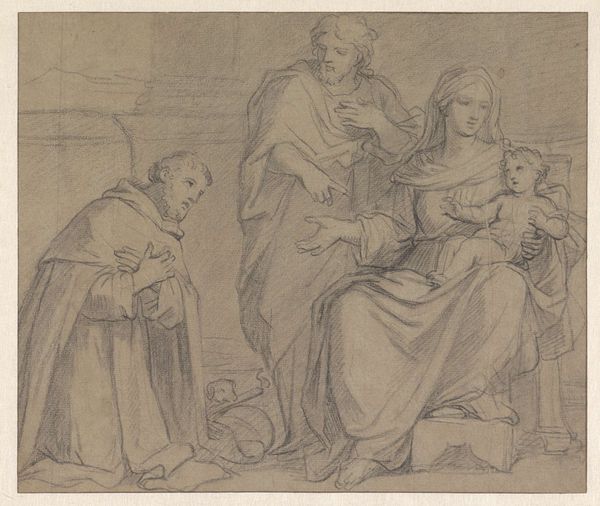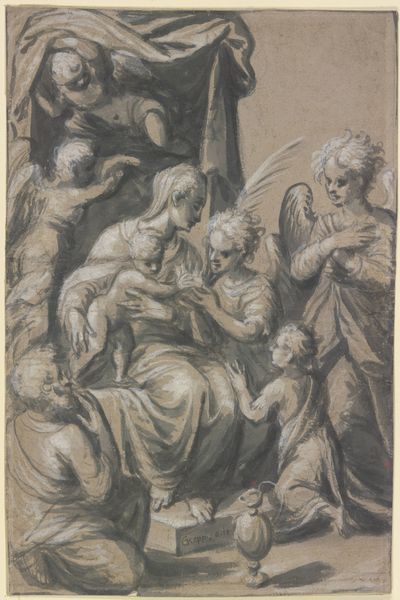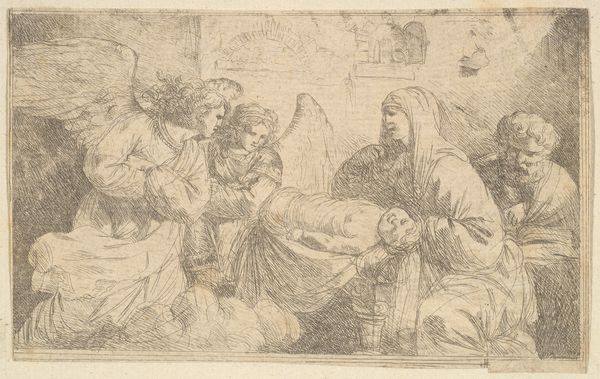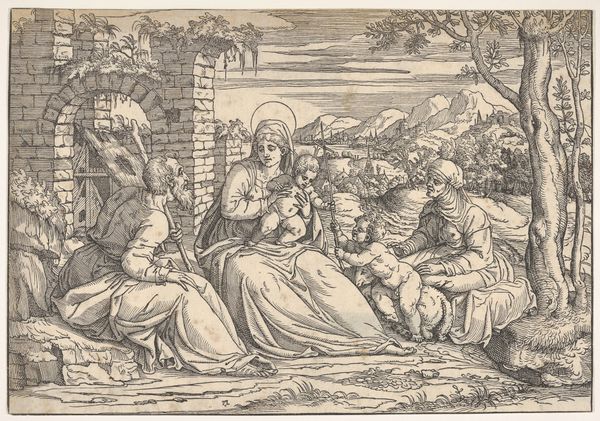
Anna selvtredje flankeret af Hl.Jeromimus og en bispehelgen, der vises som kirkestifter 1484 - 1542
0:00
0:00
drawing, coloured-pencil, tempera
#
portrait
#
drawing
#
coloured-pencil
#
tempera
#
figuration
#
coloured pencil
#
history-painting
#
italian-renaissance
Dimensions: 138 mm (height) x 229 mm (width) (bladmaal)
Curator: We’re looking at “Anna selvtredje flankeret af Hl.Jeromimus og en bispehelgen, der vises som kirkestifter” by Bagnacavallo, dating from between 1484 and 1542. The medium includes tempera and coloured pencil drawing. Editor: It’s fascinating how muted the colours are! The soft lines, combined with the earth-toned palette, imbue the piece with a sense of reverent contemplation. Almost like looking at a faded memory. Curator: The artist has certainly created a compelling visual structure. Notice how the composition organizes three distinct figures—Saint Anne, flanked by Saint Jerome and a bishop saint who’s presented as a church founder. This tripartite structure creates balance, yes, but also a carefully orchestrated hierarchy. Editor: Exactly! I’m immediately drawn to the labor embedded in its creation. Considering the Renaissance context, tempera would require extensive preparation and application by hand. Then, consider the coloured pencil drawings: there's an intimate scale that emphasizes the artist's manual skill and intention. This focus challenges the idealized narratives, refocusing on the physical processes central to making art. Curator: And how skillfully Bagnacavallo models form through the nuanced application of colour! Observe how the figures emerge three-dimensionally from the flat surface, defined by precise variations in light and shadow. The subtlety here transcends mere depiction; it's a sophisticated articulation of theological concepts. The divine emerges through the very act of representation. Editor: Agreed, but let’s also think about what that representation means to contemporary viewers. For a modern audience, it could invite reflection on labour ethics within cultural production itself. Were the artists part of a collective? A workshop system? We might examine questions around material distribution or patronage impacting artwork, questioning traditional attributions associated solely artists of great Renaissance pieces, emphasizing socioeconomic exchanges between creator-s and societies consuming works now celebrated worldwide for solely a perceived beauty within visual arrangements alone at high monetary valuation itself without context considering processes throughout history involved when generating masterpieces. Curator: A compelling point—and an excellent lens through which to reassess the art's legacy. The dialogue established in its structure makes sure we have an understanding beyond surface, so that the message echoes still today across histories! Editor: Ultimately, a painting like this isn't only a relic of history, nor simply a display of an artist's capability for creating aesthetics but a testament about ongoing tensions present regardless era whether or not concerning beliefs driving creative forces since existence.
Comments
No comments
Be the first to comment and join the conversation on the ultimate creative platform.
